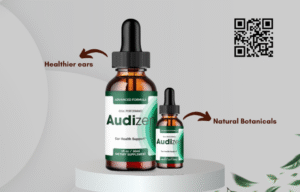How Often Should You Clean Your Concrete/GRP Tank?
Water storage tanks are essential for homes, businesses, and industries. Over time, dirt, algae, bacteria, and other contaminants build up...

Water storage tanks are essential for homes, businesses, and industries. Over time, dirt, algae, bacteria, and other contaminants build up inside these tanks, making the water unsafe. Whether you have a concrete tank or a GRP (Glass Reinforced Plastic) tank, regular cleaning is crucial to ensure clean and safe water storage.
NOTE: Ensure the safety and longevity of your water storage with professional Concrete/GRP Tank cleaning services! Contact us today for expert cleaning solutions that keep your tanks hygienic and compliant with regulations.

But the big question is: How often should you clean your tank? The answer depends on several factors, such as the type of tank, the water source, and environmental conditions. In this blog, we will discuss the recommended cleaning frequency, why regular cleaning is important, and how you can do it effectively.
Why Is Tank Cleaning Important?
Before we discuss the cleaning frequency, let’s first understand why cleaning your water tank is necessary.
1. Ensures Clean and Safe Water
Water stored in tanks can become contaminated with bacteria, algae, and dirt. If not cleaned regularly, this can lead to health risks, especially if the water is used for drinking or cooking.
2. Prevents Bacterial Growth
Dirty tanks create the perfect environment for bacteria, mold, and algae to grow. Some bacteria, such as Legionella, can cause serious illnesses. Regular cleaning helps prevent this.
3. Extends the Life of the Tank
Over time, sediment and debris can cause damage to the tank walls. Cleaning removes these contaminants and helps maintain the tank’s structural integrity, reducing the risk of leaks or cracks.
4. Improves Water Quality and Taste
If your water has a bad smell or taste, the reason might be a dirty tank. Cleaning ensures the water remains fresh and free from foul odors.
5. Prevents Blockages and Damage
Dirt and sediment can clog pipes and pumps, leading to costly repairs. Regular cleaning prevents blockages and keeps the system running smoothly.
How Often Should You Clean Your Tank?
Now that we understand the importance of cleaning, let’s discuss how often you should clean your concrete or GRP tank.
1. General Recommendation
Most experts recommend cleaning at least once a year. However, some factors may require more frequent cleaning.
2. Factors That Affect Cleaning Frequency
Here are some factors that determine how often your tank should be cleaned:
a) Type of Water Stored
- Municipal Water Supply: If your tank stores water from a municipal source (already treated), cleaning once a year is usually enough.
- Well Water or Borehole Water: If your water comes from a well, it may contain more sediment and bacteria, requiring cleaning every 6 months.
- Rainwater Storage: If your tank collects rainwater, debris, leaves, and bird droppings can accumulate. Cleaning every 4 to 6 months is recommended.
b) Location and Environment
- Tanks in dusty or industrial areas may collect more dirt and need cleaning more frequently.
- If your tank is exposed to direct sunlight, algae growth can be faster, requiring more frequent cleaning.
c) Usage of the Tank
- Tanks used for drinking water need more frequent cleaning than those used for irrigation or industrial purposes.
- If the tank is used daily, sediment and dirt build-up will be faster, requiring cleaning every 6 months.
d) Signs That Your Tank Needs Cleaning
Even if you follow the recommended schedule, it’s important to watch for signs that your tank needs cleaning sooner than planned:
- Water smells bad or tastes unusual.
- Green or black algae are visible inside the tank.
- Sediment buildup at the bottom.
- Cloudy or discolored water coming from taps.
- Pipes and filters clog frequently.
If you notice any of these signs, clean your tank immediately.
How to Properly Clean a Concrete or GRP Tank
Cleaning a water tank requires careful steps to ensure complete removal of dirt and bacteria.
1. Safety Precautions Before Cleaning
Before starting, make sure you follow these safety steps:
- Turn off the water supply to prevent contamination.
- Wear protective gloves and masks to avoid exposure to bacteria.
- Use non-toxic cleaning agents to avoid chemical contamination.
2. Steps for Cleaning the Tank
a) Drain the Tank
Completely empty the tank by opening the outlet valve or using a pump.
b) Remove Sediment and Debris
Use a brush or high-pressure water spray to scrub the walls and floor of the tank. If there is heavy buildup, use a vacuum pump to remove settled debris.
c) Use a Cleaning Solution
Mix chlorine bleach or a specialized tank cleaning solution with water and scrub all surfaces. This helps kill bacteria and algae.
d) Rinse Thoroughly
After scrubbing, rinse the tank multiple times with clean water to remove any remaining cleaning solution.
e) Disinfect the Tank
Fill the tank with a small amount of water and add a disinfectant (like chlorine). Let it sit for a few hours before draining and rinsing again.
f) Refill the Tank
Once the tank is completely clean, refill it with fresh water and resume usage.
Professional vs. DIY Tank Cleaning: Which One is Better?
Some people prefer cleaning their tanks themselves, while others hire professionals. Let’s compare both options.
DIY Cleaning
Pros:
- Saves money.
- Can be done on your schedule.
Cons:
- Requires effort and time.
- May not be as effective as professional cleaning.
Professional Cleaning
Pros:
- More thorough cleaning.
- Uses advanced equipment and disinfectants.
- Saves time and effort.
Cons:
- Costs more than DIY cleaning.
If you have a large tank or severe contamination, hiring a professional is the best choice.
Conclusion
Regular cleaning of concrete and GRP tanks is essential to maintain water quality and extend the tank’s lifespan. While once a year is a general recommendation, factors like water source, location, and usage may require cleaning every 4 to 6 months. Keep an eye on signs of contamination, and if needed, call professionals for a thorough clean.
By following the right cleaning schedule, you ensure your stored water is always safe, fresh, and free from harmful contaminants. Need help with tank cleaning? Contact a professional service today!
For more insightful articles related to this topic, feel free to visit thenewsus






